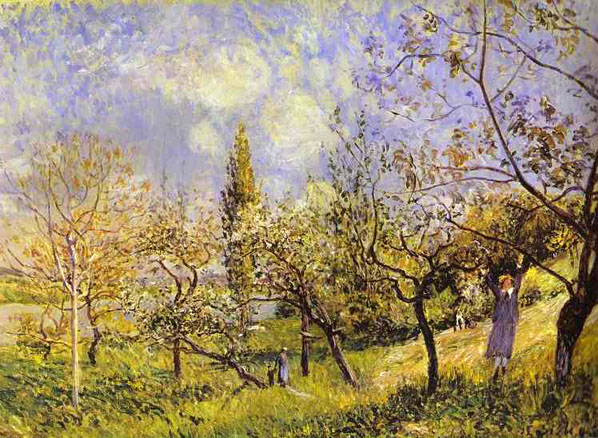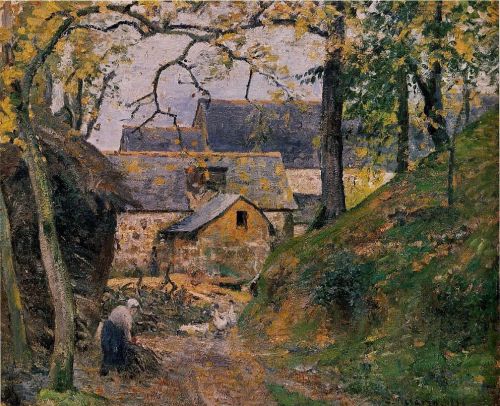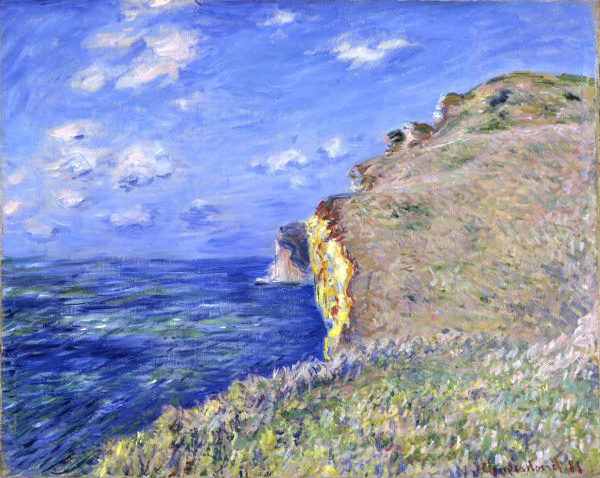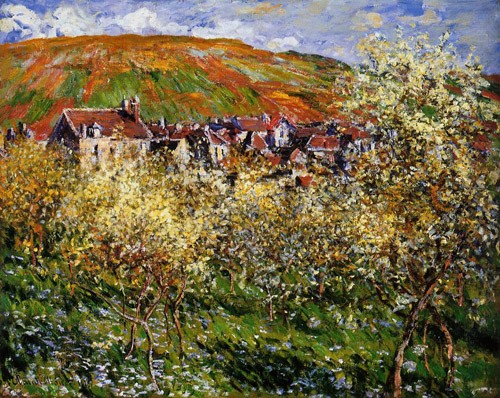En Plein Air
Signature Character of Impressionism
Impressionist art violates all traditional academic rules of artistic painting when it first appeared in the 19th century. The objective was to portray the artist’s perceptual impression and recreate this impression to the eyes of the beholder, rather than recreate details of a reality as seen by the artist.
It was a distinct departure from the realist style where brush strokes are less prominent in favor of near-photographic quality in the paintings. And while most realistic styles depicted historical and nobler subjects where the style tended to be more suitable, impressionists use their human faculties of perception to depict more mundane contemporary subjects that strike them the first time.
Impressionist paintings generally use relatively thinner and smaller but visible brush strokes that impart a more gritty texture, often considered unrefined and less contrived which accounted for their initial unflattering reviews in the 19th century. Most of its technical character can be summed up as follows:
- Thick and short brush strokes aim to capture the essence of the subject and create an impression, rather than delving on its details. The painting style is often referred to as impasto.
- Colours are juxtaposed side-by-side with as few mixing as possible to create a vibrant color temperature where the colors mix in the eye of the beholder. On the other hand, grays and dark colors are produced by mixing complementary colors. Pure impressionism avoids the use of black
- Sharp edges are rare. Instead, impressionist works have soft subject edges where wet paint is applied into wet paint of another color in successive strokes to produce soft edges between color transitions.
- Impressionist paintings do not use transparent or thin paint films (glazes) that realist artists employee to produce effects. Impressionist surfaces are often opaque.
- Natural light highlighted with close attention to the reflection of colours from one object to another. In morning scenes, shadows are boldly painted with the blue of the sky or whatever the color of the objected where they are cast, providing a sense of freshness not represented in earlier realist styles. Blue shadows on snow influenced this technique called diffused reflection that has become a hallmark of impressionist paintings.
Painting Out of Doors
The Impressionists loved painting out of doors. The ever-changing face of nature lent itself perfectly to their interests in capturing fleeting moments of light and color. They used broken brush work and prismatic to convey nature's mutability.

Alfred Sisley
(French, 1839 - 1899)
A Meadow in Springtime at by, 1881
Oil on canvas
Impressionist’s landscapes almost always have a human presence. Even if people are absent, there frequently is something – a boat, or even a haystack – to give a sign of human activity. Suburban gardens and riverside paths, rural parks and woodlands, were the most familiar examples of nature for many of the Impressionists. For them nature was primarily a social experience.

"[Pissaro] paints his country folks with no false glamour, simply, as he sees them."
- JK Huysmans
Camille Pissaro
(French , 1830 - 1903)
Farm at Montfoucault, 1874
"Never before have paintings appeared to me to possess such an overwhelming dignity. One can almost hear the inner voices of the earth and sense the tree's burgeoning."
- Emile Zola on Camille Pissaro
Not every Impressionists painter focused on images of the middle class spending leisure time in gardens and parks. Camille Pissaro had another approach to painting outdoors. He was more interested in the working, rural people whose lives were intimately connected to the soil.
Landscape as Impression
"Landscape is nothing but an impression - an instantaneous one." - Claude Monet

"My only desire is an intimate fusion with nature, and the only fate I wish to have worked and lived in harmony with her laws." - Claude Monet
Claude Monet
(French, 1840 - 1926)
The Cliff at Fecamp1 1881
Quickly applied brush strokes give Impressionists art the painterly illusion of movement and spontaneity. Even reflections on the water’s surface appear as substantial as any of the real objects in a scene. The artist were not interested in rendering details but rather wanted to create an effect of the whole scene as thought it was perceived in a single fleeting glance.
Bright Pigments

Claude Monet
(French, 1840 - 1926)
Plum Trees in Blossom, 1879
"Their canvas are done in a singularly bright tonal range...their canvases...are windows opening on the joyous countryside, on rivers full of pleasure boats stretching into the distance, on a sky which shines with light mists, on the outdoor life, panoramic and charming" - Armand Silverstre
One way in which the Impressionists achieved an overall open and light effect was by priming their canvases with white or cream-colored paint. This made the pigments they used appear lighter and brighter.
To read more on Impressionism Themes and their reviews please click here.
